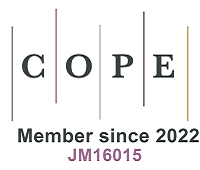fig3

Figure 3. (A) Schematic diagram of lattice softening caused by chemical doping; (B) Schematic illustration of lattice anharmonicity due to the complexity of Ge sublattice; (C) Difference between elements (Ge, Mn, Ag and Sb) in atomic mass, radius, and electronegativity. Copyright 2025, Elsevier[58]; (D) Schematic diagram of single-atom-layer 2D Te vacancies, Bi and In doping in Pb0.988Bi0.007In0.005Te crystal structures; (E) Phonon group velocity as a function of frequency for PbTe (black) and PbTe with Bi/In next to 2D vacancy (blue). Copyright 2024, Elsevier[59]; (F) Crystal structure of Bi8Te9, Bi6Te7, Bi4Te5, and Bi2Te3; (G) A schematic illustration of the underlying mechanisms of the ultralow lattice thermal conductivity in the (Bi2)m(Bi2Te3)n (m/n = 3:9, 2:7, and 1:5) homologous series in comparison with Bi2Te3. The weak chemical bonding leads to low group velocity in the (Bi2)m(Bi2Te3)n homologous series compared to Bi2Te3. In addition, the Brillouin zone of the (Bi2)m(Bi2Te3)n homologous series shrinks as the number of atoms in the unit cell increases. Consequently, the high-frequency acoustic phonon modes are cut off because of the low group velocity of the acoustic phonon modes and the small volume of the first Brillouin zone in the (Bi2)m(Bi2Te3)n homologous series. Copyright 2021, American Chemical Society[60]; (H) Atomic-resolution HAADF-STEM image of Sn0.87Mn0.08Sb0.08Te-5%AgSbTe2 and EDS mappings of SnTe matrix (FFT image that corresponds to the HAADF-STEM image inset); (I) 2D map describing chemical bonds in solids. The map is spanned by the number of electrons transferred normalized by the oxidation state and electrons shared between adjacent atoms. Different chemical bonding mechanisms are demarcated by different colors. Copyright 2022, the Authors. Advanced Functional Materials published by Wiley-VCH GmbH[66]; (J) A schematic band diagram from simple chemical bonding (hybridization) arguments. The schematics of atomic orbital energies of Cu, S, Mn, Ag, In, Ga, Zn, Fe, and the molecular orbital energies of Mn-doped Cu2S and (K) Mn-doped Cu2S with hexagonal structures. The bonding (stabilizing) and antibonding (destabilizing) states could be well defined by the COHP values. The bonding orbital (grey area) has negative COHP. Copyright 2023, Elsevier[67]. HAADF-STEM: High-angle annular dark field-scanning transmission electron microscopy; FFT: fast Fourier transformation; EDS: energy dispersive spectrometer; COHP: crystal orbital hamilton populations.










